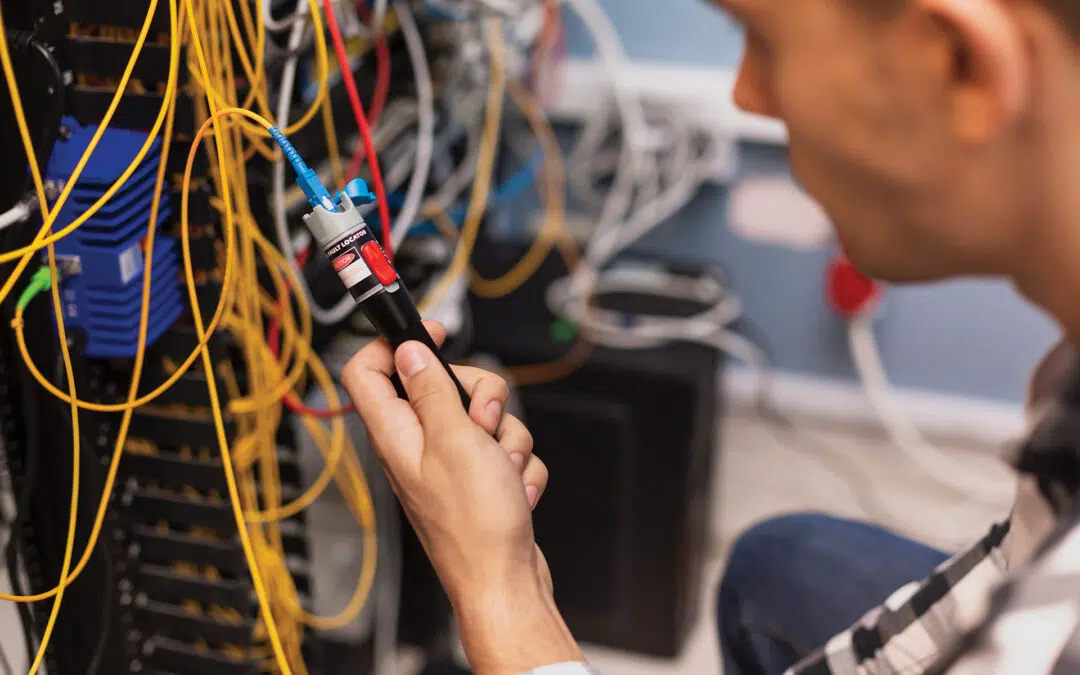IO-Link – an integral part in the Industrial Automation
As more devices are interconnected at the factory level, the automation process greatly depends on seamless communications between devices from the shop floor such as sensors and actuators to the control systems like PLCs, and others. To ensure this, IO-Link is one of the first standardized input-output data communication protocol that connect devices bi-directionally. It means the devices are paired in a point-to-point communication that they can transmit information to and fro.
IO-Link enables point-to-point communication over short distances. Such an effective, seamless communication protocol is undoubtedly one of the crucial elements of the factory automation process that comes in as a part of Industry 4.0. Implementing the effective IO-Link strategies plays an important role in the overall network efficiency. Not only this, it facilitates ease of configuration as it reduces the number of wires and connections for OEMs and the end-users alike. IO-Link handles data types like process data, parameter data, and event data. All of these make it somewhat similar to a universal connector, which reduces downtime and improves visibility into the plant floor.
Why is an IO-Link required?
One of the most critical challenges in implementing an automated factory setup is setting up effective communication between devices at the ground level. For the manufacturing industry, IO-Link is required for more reasons than one.
First, it fills in the communication gap present even at the lowest automation hierarchy level. It also acts as a liaison in identifying error codes and help the service professionals troubleshoot the issue without shutting down the production or manufacturing process. It also makes remote access possible wherein the users are connected to a master/network to verify and configure the required sensor-level information.
Holistically put, we can say industries require IO-Link if they are looking for a cost-effective way to improve their efficiency and machine availability, which are crucial elements in implementing a successful automated factory. To understand this further, we have jotted down the top eight advantages of the IO-Link in this article’s next section.
Top 8 Advantages of IO-Link
Easy Connection of Field Level Devices
Embedding IO-Link in your field-level devices like sensors and actuators facilitates better data transfer between them and the controllers via an IO-Link master. It in turn, enables you to connect the sensors and controllers like PLC, HMI, SCADA, etc. without worrying about loss of data.
Enhanced Diagnostic Capability
One of the crucial issues that cause hindrance in implementing a seamless automation experience is that errors in data processing or handling go unnoticed or are discovered quite late. It may lead your manufacturing or production unit to go to a standstill. With the IO-Link, since the communication is bidirectional and more visible, errors can be detected and examined for severity at the right time. It helps in troubleshooting the issues without stalling the production processes.
Better Data Storage and Data Availability
IO-Link offers improved data storage options. IO-Link offers parameterization of data that can be stored within the IO-Link master. This makes the automatic configuration of the IO-Link possible. Also, the types of data available vary from process data, service data, and event data. Process data is the information that a machine sends or measures; the service data refers to the report that spells the technical and manufacturing details of the device. The event data is the information such as notifications or upgrades that are critical and time-specific.
Remote Access to Device Configuration and Monitoring
IO-Link enables users to connect via IO-Link master or a network for remote access to sensors, actuators, controllers from virtually any location. It allows users to examine and modify the device parameters when required from anywhere. It improves overall productivity and plant efficiency.
Auto Device Replacement
Not only does the IO-Link allow remote access to device settings, but the data storage capacity also facilitates automated parameter reassignment. It makes device replacement a lot easier and hassle-free. Users can easily import all the required data to the replaced device and continue their factory automation process.
Simplified Wiring
Since the IO-Link is free of any complicated wiring, it reduces the hassles related to the same. As it supports many communication protocols, the IO-Link devices can be configured with existing wiring, reducing the overall implementation costs to a minimum. It also does not require any analog sensors and actuators, which in turn negates the need for additional connection wires.
Device Validation
IO-Link offers users to carry out device validation before leveraging them for the production process. It also empowers users to make an informed decision like pairing the IO devices with the correct IO master link.
Saves Time and Money During Device Setup
As the IO-Link does not require an additional setup for configuration and is compatible with many communication devices, the device setup becomes easy and does not require much time. With automation, you can reduce the time required for device setup, all within your budget constraint.
Conclusion
To stride ahead in the digital world, you need to be clear about your goals and objectives regarding adopting new technologies. Utthunga’s IO-Link Master Stack and configurator are appreciated throughout the industrial space for the quality we serve. Our team of experts guide you through the implementation and maintenance process for your manufacturing or production, so you leverage the ultimate benefits of deploying an IO-Link system into your network.
If reduced operational costs and improved plant efficiency are what you need, then contact us, and we will make sure our IO-Link products do the magic for you.

